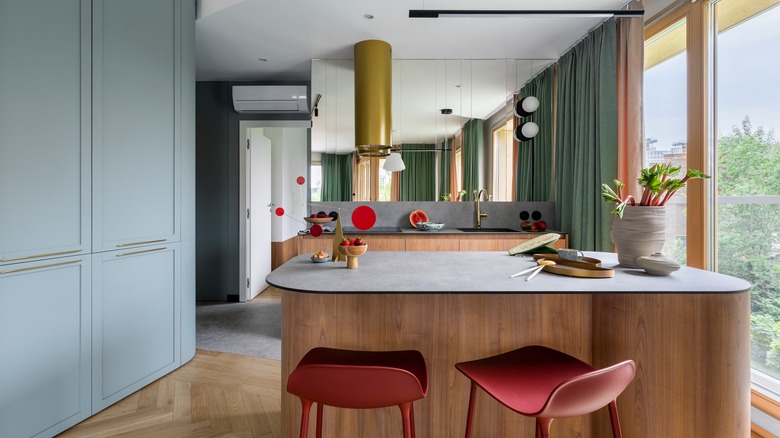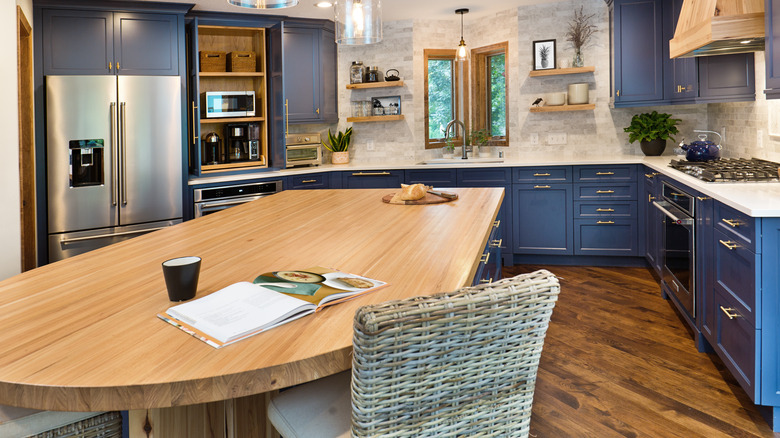Your Kitchen Island Doesn't Have To Be A Rectangle: How To Pick The Right Shape For Your Space
Many considerations go into designing a kitchen, and counter space decisions are particularly impactful. The design and placement of an island, for instance, is a critical choice that can either enhance the room or create functional issues that will plague your household for years to come. Instead of just one, should you have two kitchen islands? How can you choose the perfect seating for your island? One factor you may not have considered, though, is shape. The cookie-cutter standard is a rectangular island, but there is a bevy of choices that are outside the box (literally) and may be a better fit for your culinary room.
For some expert insight on choosing the right island shape, Food Republic spoke with Alykhan Velji, creative director of Alykhan Velji Designs, who is a big proponent of thinking outside the norm. "I love the idea of doing an island that is not a rectangle or square," he shared. "Something unique and maybe even sculptural to add another design detail to the kitchen."
There really aren't limits to the kitchen island shape one can opt for. Some common divergences include L-shaped, U-shaped, and circular islands — but really, any shape can be executed. It all comes down to what is best suited for maximizing the functionality in a particular kitchen. "You have to do what is right for your space," Velji emphasized. An oddly shaped room, for instance, may call for a uniquely shaped island, such as a long pentagon or even an asymmetrical shape. Don't be afraid to think beyond the square or rectangle and seek a customized design.
Other kitchen island design considerations
Maintaining good traffic flow in your kitchen is an important consideration when making decisions about an island — the island should never obstruct flow or functionality. "You want to ensure there is ample room in between your island and perimeter cabinets," Alykhan Velji advised. "A minimum of 36 inches should be considered so that there is enough room to move around the kitchen."
This is where an alternative shape can be a helpful option. If your space is on the smaller side, a curved island is one potentially good choice for adding counter space without sacrificing functionality. Such designs can also help give the illusion of extra roominess. "A rounded kitchen island helps with flow and creates softness," Velji detailed, "as does an island that is open on the bottom. If you have a tight space, these will really help create visual space." One with a partial or full open-leg design, providing open sightlines from the base of the counter to the floor, allows more light to flow through, which also gives the impression of roominess.
When designing your kitchen, the island's placement in the room is very important. "I always like an island that [is centered within] the kitchen. It is just looks better overall when it comes to the proportions of a kitchen," Velji explained. He added that if you don't have enough space for this, a kitchen peninsula rather than a standard island might be the right choice for your space: "These types of islands [need] to be treated differently and can really use some extra design detail, such as a rounded counter top, interesting color variation from the perimeter, et cetera."


